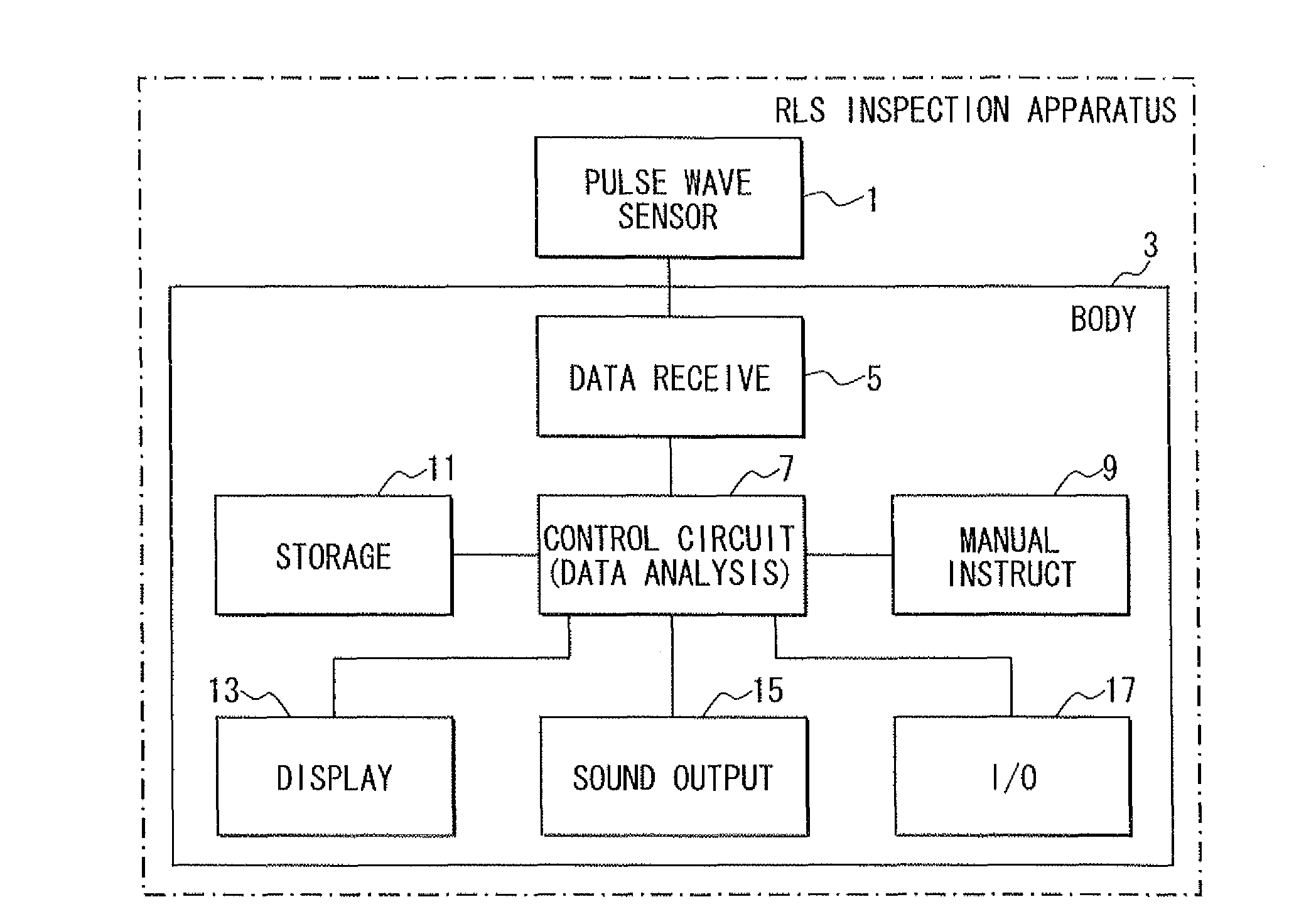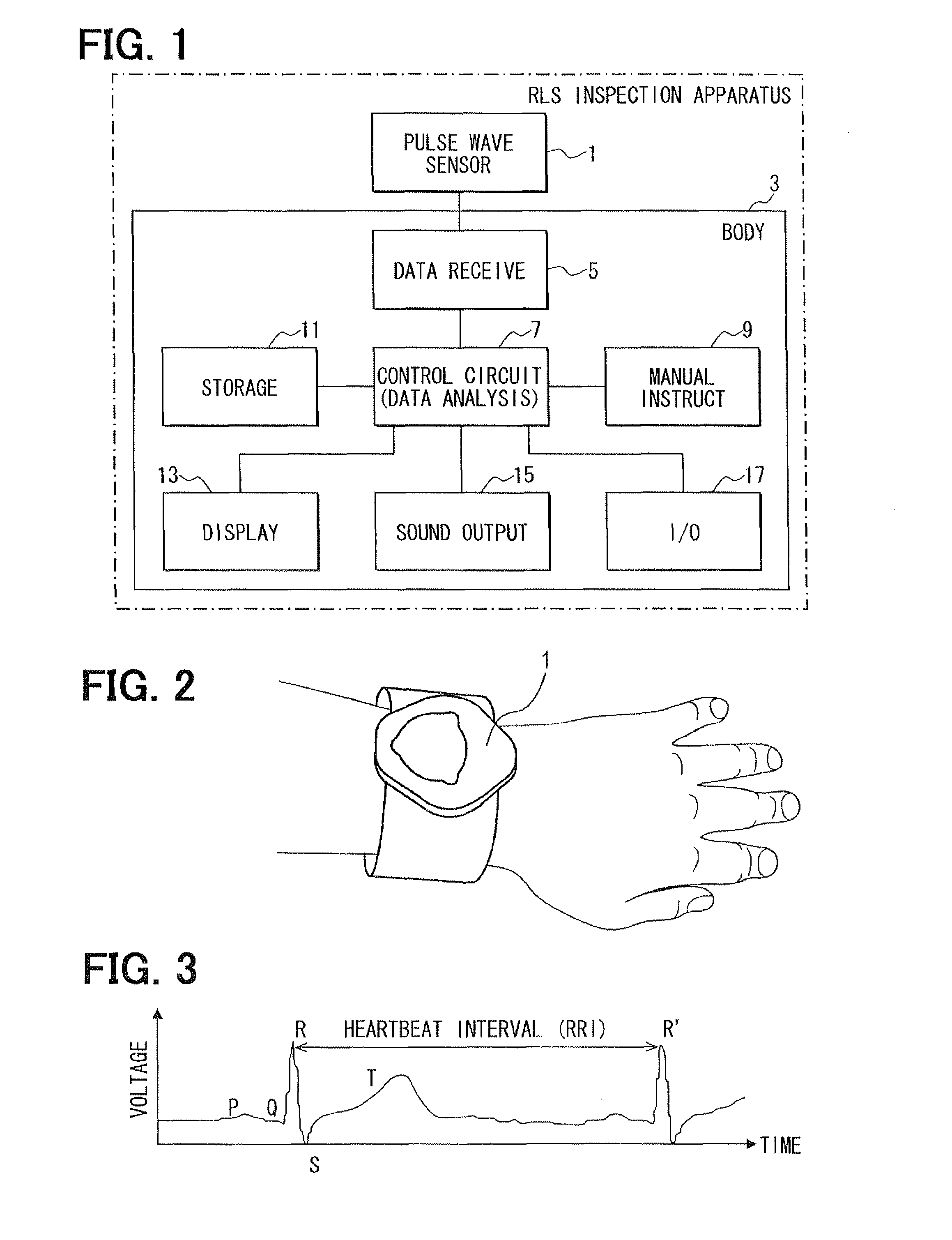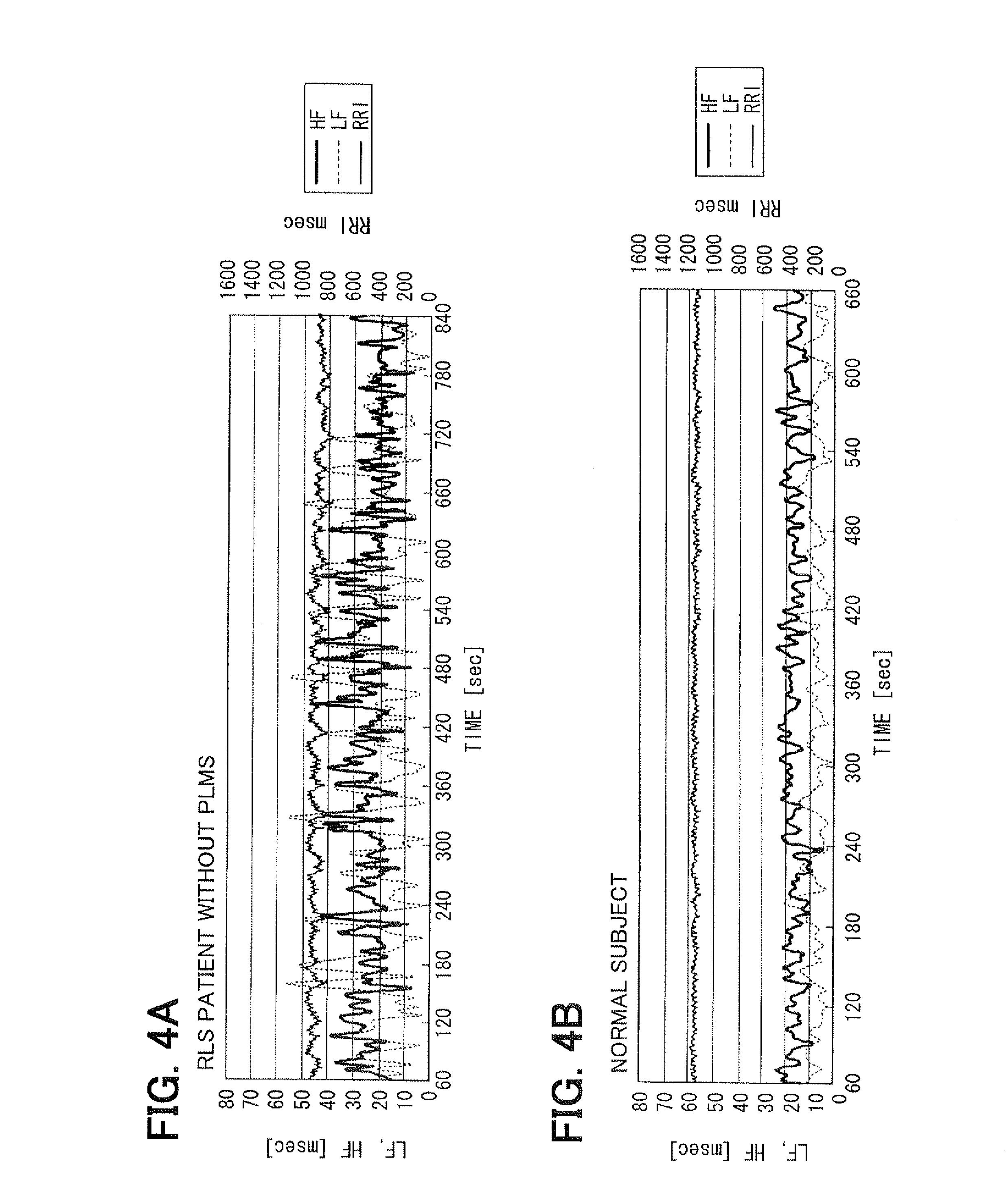Living body inspection apparatus, and relevant method and program product
- Summary
- Abstract
- Description
- Claims
- Application Information
AI Technical Summary
Benefits of technology
Problems solved by technology
Method used
Image
Examples
first example
[0041]a) The following explains a basic configuration of a living body inspection apparatus (referred to as an RLS inspection apparatus hereafter) which detects RLS (Restless Legs Syndrome) or its symptom according to a first example of the present embodiment with reference to FIG. 1 and FIG. 2. As illustrated in FIG. 1, the RLS inspection apparatus includes the following: a pulse wave sensor 1 (refer to FIG. 2) which is attached to a human body for detecting a pulse wave; and a main body portion 3 which executes various kinds of computations based on measurement data of the pulse wave sensor 1. Furthermore, the configuration or function of the main body portion 3 may be incorporated into the pulse wave sensor 1.
[0042]It is noted that the pulse wave sensor 1 is a known optical reflection type sensor which has a light emitting element (for example, a light emitting diode: LED) and a light receiving element (photo diode: PD) for detecting a variation of blood flow amount as a variatio...
second example
[0087]The following explains a second example of the embodiment while omitting portions similar to those of the first example.
[0088]a) The present inventers' research has determined that, of the low frequency components, the low frequency components of 0.03 to 0.09 Hz (referred to as RLSF) has a significant association or correlation with RLS.
[0089]FIG. 11 illustrates a result of a frequency analysis of heartbeat intervals relative to eight test subjects obtained from an electrocardiogram sensor. As clearly understood from FIG. 11, the severe diseased PLM patients (patient having PLM occurring frequently) have respective high peaks in the range of the specific low frequency components RLSF.
[0090]Therefore, using the specific low frequency components RLSF is effective for the determination of RLS. FIG. 12 compares the values of LF / HF and RLSF / HF with respect to eleven test subjects.
[0091]As clearly understood from FIG. 12, LF / HF and RLSF / HF are differentiated depending on the presenc...
third example
[0117]The following explains a third example of the embodiment while omitting portions similar to those of the second example. The present third example includes executions of an clock time-based amendment, and an age-based amendment in addition to the execution or configuration of the second example. Those executions are mainly done by the control circuit 7 functioning as the data analysis device; thus, the control circuit 7 may function as an amendment section to execute a clock time-based or age-based amendment below.
[0118]a) Clock Time-Based Amendment
[0119]The symptoms of RLS tend to increase (become severe) from the evening and decrease (become mild) towards the dawn. Therefore, the amendment uses the fact that % RLSF changes asymptotically from the time immediately after the sleep onset to the dawn (use of (i) clock time and (ii) time-based variation).
[0120]In detail, % RLSF is calculated from the measurement start. While % RLSF decreases below a half from the time immediately...
PUM
 Login to View More
Login to View More Abstract
Description
Claims
Application Information
 Login to View More
Login to View More - R&D Engineer
- R&D Manager
- IP Professional
- Industry Leading Data Capabilities
- Powerful AI technology
- Patent DNA Extraction
Browse by: Latest US Patents, China's latest patents, Technical Efficacy Thesaurus, Application Domain, Technology Topic, Popular Technical Reports.
© 2024 PatSnap. All rights reserved.Legal|Privacy policy|Modern Slavery Act Transparency Statement|Sitemap|About US| Contact US: help@patsnap.com










